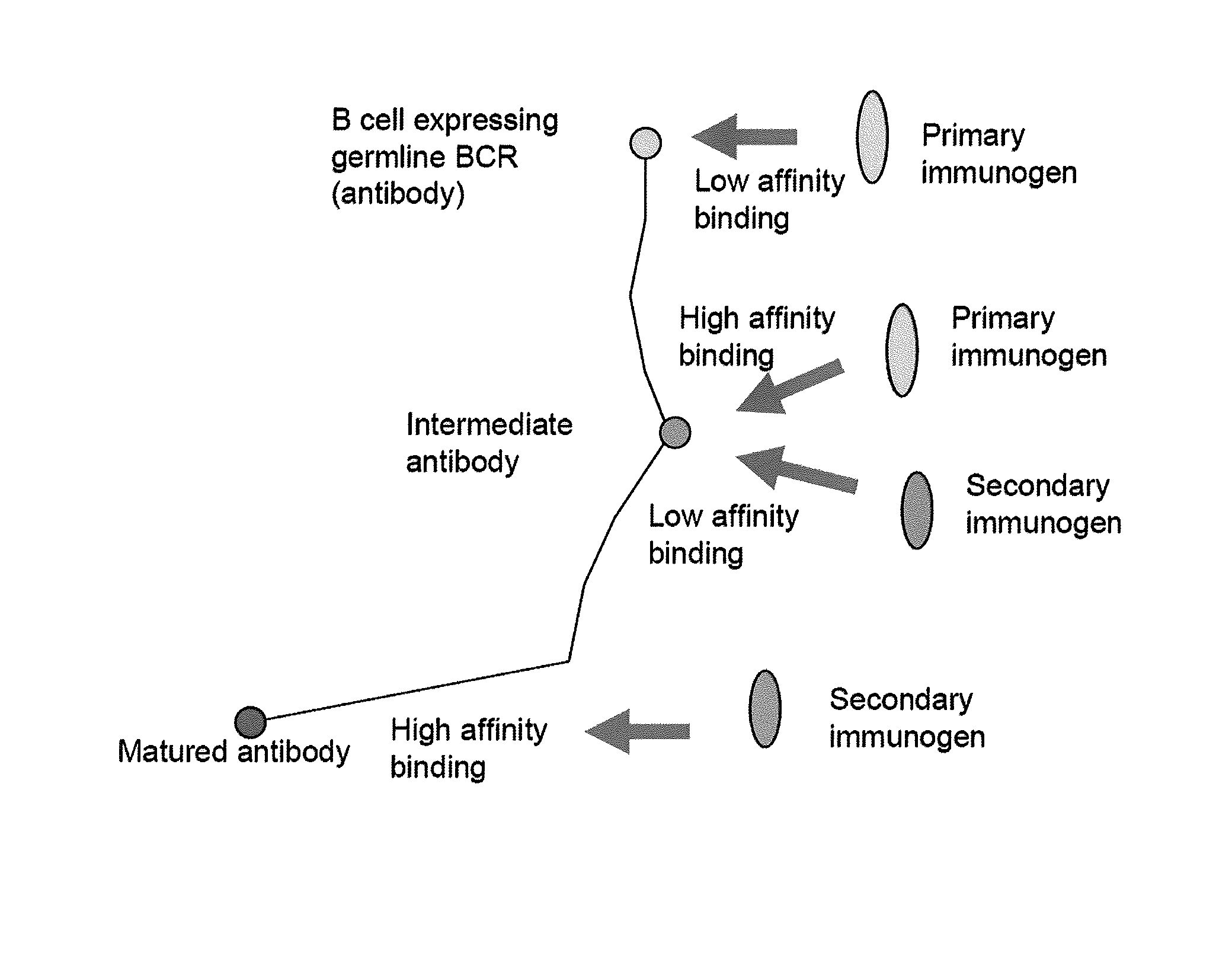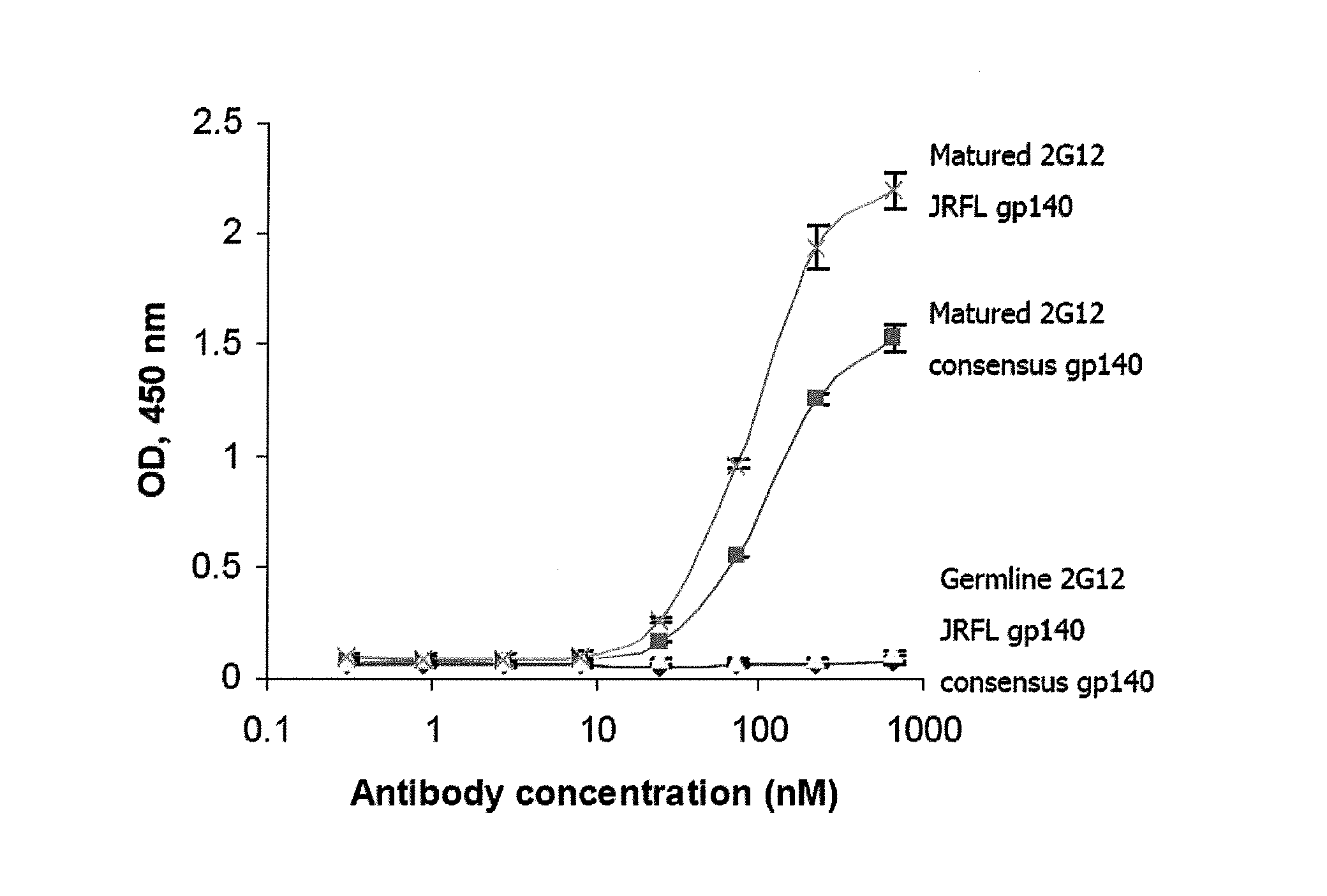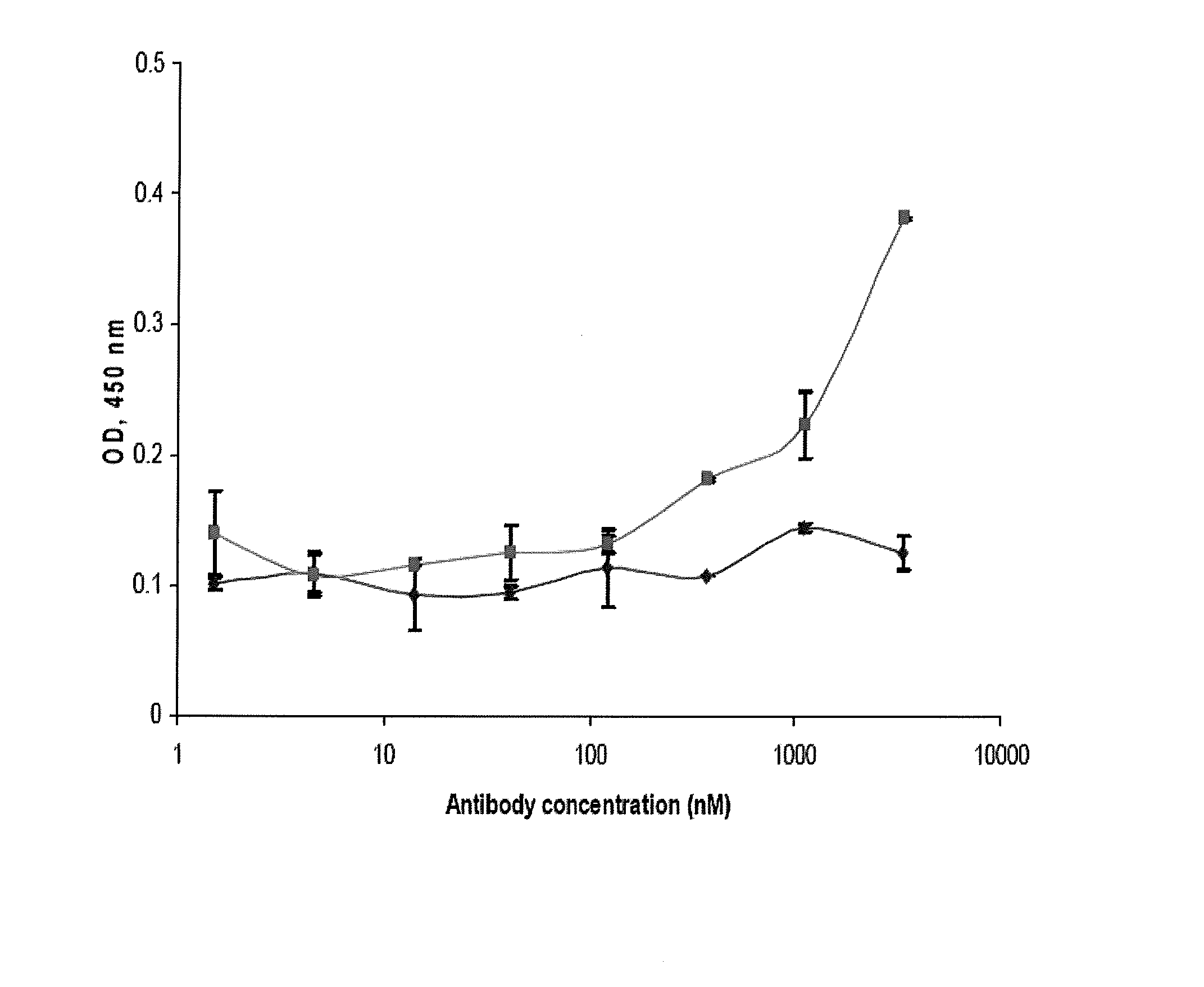Method of making a vaccine
a vaccine and method technology, applied in the field of methods of making vaccines, can solve the problems of taking years or longer, being practically impossible to rely on vaccine immunogens, and bcrnabs might never even be elicited, and achieve the effect of achieving the immediate degree of somatic mutational diversity
- Summary
- Abstract
- Description
- Claims
- Application Information
AI Technical Summary
Benefits of technology
Problems solved by technology
Method used
Image
Examples
example 1
HIV bcrnAbs Show Extensive Somatic Mutational Diversification in Contrast to bcrnAbs Against Henipaviruses and the SARS CoV which Cause Acute Infections
[0213]In spite of the tremendous amount of work on HIV-specific antibodies, there are relatively few articles that provide an analysis of their sequences. Early studies have found relatively extensive antigen-driven maturation and nonrestricted use of the V genes in several HIV-specific antibodies (Felgenhauer et al., 1990; Andris et al., 1991; Marasco et al., 1992; Moran et al., 1993). Other early studies of other infectious agents, e.g., Haemophilus influenzae, demonstrated that the human antibody response to type b polysaccharide of H. influenzae involves restricted VH gene usage (Scott et al., 1989). The VL response to H. influenzae shows two distinct populations, one that has little or no somatic mutation and a second, less frequent population of multiple VL genes with significant mutations, mainly in the CDRs (Scott et al., 199...
example 2
Antibody Diversity
[0223]An estimate of the germline antibody diversity in humans based on the number of different antibodies that could be formed from the germline V, D, and J sequences is known to be about 104 combinations for the heavy chain and several hundred for the light chain (Max, 2003). This estimate assumes that there are 40 VH regions, 27 D regions, and 6 JH regions, resulting in 6,480 possible combinations for the heavy chain. If the three reading frames available for the D regions are taken into account, the total comes to 19,440 combinations of amino acid sequences. However, at least in one of the reading frames there are numerous stop codons. Thus the actual number for the heavy chain could be on the order of 104. For the light chain, there are 145 κ combinations (29 Vκ×5 Jκ) plus 120% combinations (30 Vλ×4 Jλ), or 265 total light-chain combinations.
[0224]Other estimates have yielded similar although not identical estimates, e.g. 1.1×10 4 variable domain heavy chains ...
example 3
Identification of the Maturational Pathway or Portions of Maturational Pathways for One or More Specific Anti-HIV bcrnAb
[0229]A direct approach to identify portions of plausible pathways of maturation of antibodies with known sequences is to obtain B cell samples from non-infected and non-immunized humans that could be analyzed for antibodies that are close in sequence to those germline sequences that correspond to the sequences of the known bcrnAbs. Such antibodies are expressed, purified and characterized in terms of their binding ability which typically should be very low even to oligomeric Env. Even better approach although more difficult is to obtain sequential samples from HIV-infected individuals with high levels of bcrnAbs and analyzed them as above; sequential samples from any infected or immunized human could be also useful although the probability to obtain information for maturational pathways of bcrnAbs would be lower. Two other approaches are based on antibody librarie...
PUM
| Property | Measurement | Unit |
|---|---|---|
| dissociation constant | aaaaa | aaaaa |
| dissociation constant | aaaaa | aaaaa |
| dissociation constant | aaaaa | aaaaa |
Abstract
Description
Claims
Application Information
 Login to View More
Login to View More - R&D
- Intellectual Property
- Life Sciences
- Materials
- Tech Scout
- Unparalleled Data Quality
- Higher Quality Content
- 60% Fewer Hallucinations
Browse by: Latest US Patents, China's latest patents, Technical Efficacy Thesaurus, Application Domain, Technology Topic, Popular Technical Reports.
© 2025 PatSnap. All rights reserved.Legal|Privacy policy|Modern Slavery Act Transparency Statement|Sitemap|About US| Contact US: help@patsnap.com



